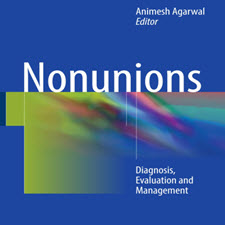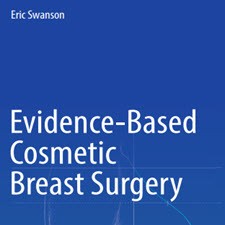Evidence-Based Physical Diagnosis
ABSTRACT
The purpose of this book is to explore the origins, pathophysiology, and diagnostic accuracy of many of the physical signs currently used in adult patients. We have a wonderfully rich tradition of physical diagnosis, and my hope is that this book will help to square this tradition, now almost two centuries old, with the realities of modern diagnosis, which often rely more on technologic tests, such as clinical imaging and laboratory testing. The tension between physical diagnosis and technologic tests has never been greater. Having taught physical diagnosis for 20 years, I frequently observe medical students purchasing textbooks of physical diagnosis during their preclinical years, to study and master traditional physical signs, but then neglecting or even discarding this knowledge during their clinical years, after observing that modern diagnosis often takes place at a distance from the bedside. One can hardly fault a student who, caring for a patient with pneumonia, does not talk seriously about crackles and diminished breath sounds when all of his teachers are focused on the subtleties of the patient’s chest radiograph. Disregard for physical diagnosis also pervades our residency programs, most of which have formal x-ray rounds, pathology rounds, microbiology rounds, and clinical conferences addressing the nuances of laboratory tests. Very few have formal physical diagnosis rounds.
INTRODUCTION
Reconciling traditional physical diagnosis with contemporary diagnostic standards has been a continuous process throughout the history of physical diagnosis. In the 1830s the inventor of topographic percussion, Professor Pierre Adolphe Piorry, taught that there were nine distinct percussion sounds which he used to outline the patient’s liver, heart, lungs, stomach, and even individual heart chambers or lung cavities. Piorry’s methods flourished for more than a century and once flled 200- page manuals,1 although nowadays, thanks to the introduction of clinical imaging in the early 1900s, the only vestige of his methods is percussion of the liver span. In his 1819 A Treatise on Diseases of the Chest,2 Laennec wrote that lung auscultation could detect “every possible case” of pneumonia.
چکیده
هدف این کتاب بررسی علل، پاتوفیزیولوژی و دقت تشخیصی بسیاری از علائم فیزیکی در حال حاضر در بیماران بزرگسال است. ما یک سنت باشکوه غنی تشخیص جسمی داریم و امیدوارم این کتاب این سنت را که تقریبا دو قرن است با واقعیت های تشخیص مدرن، که اغلب بر تست های فن آوری نظیر تصویربرداری بالینی و آزمایش آزمایشگاهی تنش بین تشخیص فیزیکی و تست های فن آوری هرگز بیشتر نشده است. با تشخیص فیزیکی 20 ساله، من اغلب دانشجویان پزشکی را در سالهای قبل از خرید کتابهای درسی تشخیص جسمی خریدم تا بتوانم به مطالعه و تسلط بر علائم فیزیکی سنتی بپردازم، اما پس از رعایت تشخیص مدرن، می گیرد در فاصله ای از بستر. به سختی می توان یک دانش آموز را که با مراقبت از بیمار مبتلا به پنومونی مواجه است، به طور جدی در مورد سر و صدا و صداهای تنفس کمتری صحبت نمی کند، زمانی که همه معلمانش بر روی اندوه های رادیوگرافی قفسه سینه بیمار تمرکز می کنند. بی توجهی به تشخیص فیزیکی نیز برنامه های اقامت ما را فرا می گیرد، که اکثر آنها دورهای صحیح اشعه ایکس، دوران آسیب شناسی، دورهای میکروبیولوژی و کنفرانس های بالینی را در مورد تفاوت های ظاهری آزمایش های آزمایشگاهی مورد توجه قرار می دهد. چند تا از موارد تشخیص جسمی رسمی دارند.
مقدمه
تشخیص فیزیکی سنتی با استانداردهای تشخیصی معاصر، یک روند مداوم در طول تاریخ تشخیص فیزیکی بوده است. پروفسور پیر آدولف نفری، در دهه 1830، استاد پیر آدولف نفری، یاد می دهد که نه صدای متمایزی برای ضربات ایستگاهی وجود دارد که او برای نشان دادن کبد، قلب، ریه، معده و حتی اتاق های قلب فرد و یا حفره های ریه استفاده می شود. روشهای Piorry برای بیش از یک قرن و چندین کتابچه راهنمای 200 صفحه به چاپ رسیده است. هرچند امروزه به لطف معرفی تصویربرداری بالینی در اوایل دهه 1900 تنها شیوهی روشهای او کوبیدن کبد است. Laennec در 1819 رساله ای در مورد بیماری قفسه سینه نوشت که استنشاق ریه می تواند “هر مورد احتمالی” پنومونی را تشخیص دهد.
Year: 2016
Publisher: ELSEVIER
By : Steven McGee
File Information: English Language/ 868 Page / size: 4.58 MB
سال : 1395
ناشر : ELSEVIER
کاری از : استیون مک گری
اطلاعات فایل : زبان انگلیسی / 868 صفحه / حجم : MB 4.58


![Evidence-Based.Physical.Diagnosis.4e.[taliem.ir]](https://taliem.ir/wp-content/uploads/Evidence-Based.Physical.Diagnosis.4e.taliem.ir_.jpg)
![Practical.Manual.of.Tricuspid.Valve.Diseases.[taliem.ir] Practical.Manual.of.Tricuspid.Valve.Diseases.[taliem.ir]](https://taliem.ir/wp-content/uploads/Practical.Manual.of_.Tricuspid.Valve_.Diseases.taliem.ir_.jpg)
![Neuroblastoma.Current.State.and.Recent.Updates.[taliem.ir] Neuroblastoma.Current.State.and.Recent.Updates.[taliem.ir]](https://taliem.ir/wp-content/uploads/Neuroblastoma.Current.State_.and_.Recent.Updates.taliem.ir_.jpg)
![Keratoconus.Recent.Advances.in.Diagnosis.[taliem.ir] Keratoconus.Recent.Advances.in.Diagnosis.[taliem.ir]](https://taliem.ir/wp-content/uploads/Keratoconus.Recent.Advances.in_.Diagnosis.taliem.ir_.jpg)
![Serious.Games.in.Physical.Rehabilitation.From.Theory.[taliem.ir] Serious.Games.in.Physical.Rehabilitation.From.Theory.[taliem.ir]](https://taliem.ir/wp-content/uploads/Serious.Games_.in_.Physical.Rehabilitation.From_.Theory.taliem.ir_.jpg)


![Handbook.of.Gynecology.[taliem.ir] Handbook.of.Gynecology.[taliem.ir]](https://taliem.ir/wp-content/uploads/Handbook.of_.Gynecology.taliem.ir_.jpg)
![Stroke.Revisited.Diagnosis.and.Treatment.[taliem.ir] Stroke.Revisited.Diagnosis.and.Treatment.[taliem.ir]](https://taliem.ir/wp-content/uploads/Stroke.Revisited.Diagnosis.and_.Treatment.taliem.ir_.jpg)

![Endocrine.Surgery.in.Children.[taliem.ir]](https://taliem.ir/wp-content/uploads/Endocrine.Surgery.in_.Children.taliem.ir_-150x150.jpg)
![Implementing, Cisco MPLS.[taliem.ir]](https://taliem.ir/wp-content/uploads/Implementing-Cisco-MPLS.taliem.ir_-150x150.jpg)
دیدگاه خود را ثبت کنید
تمایل دارید در گفتگو شرکت کنید؟نظری بدهید!